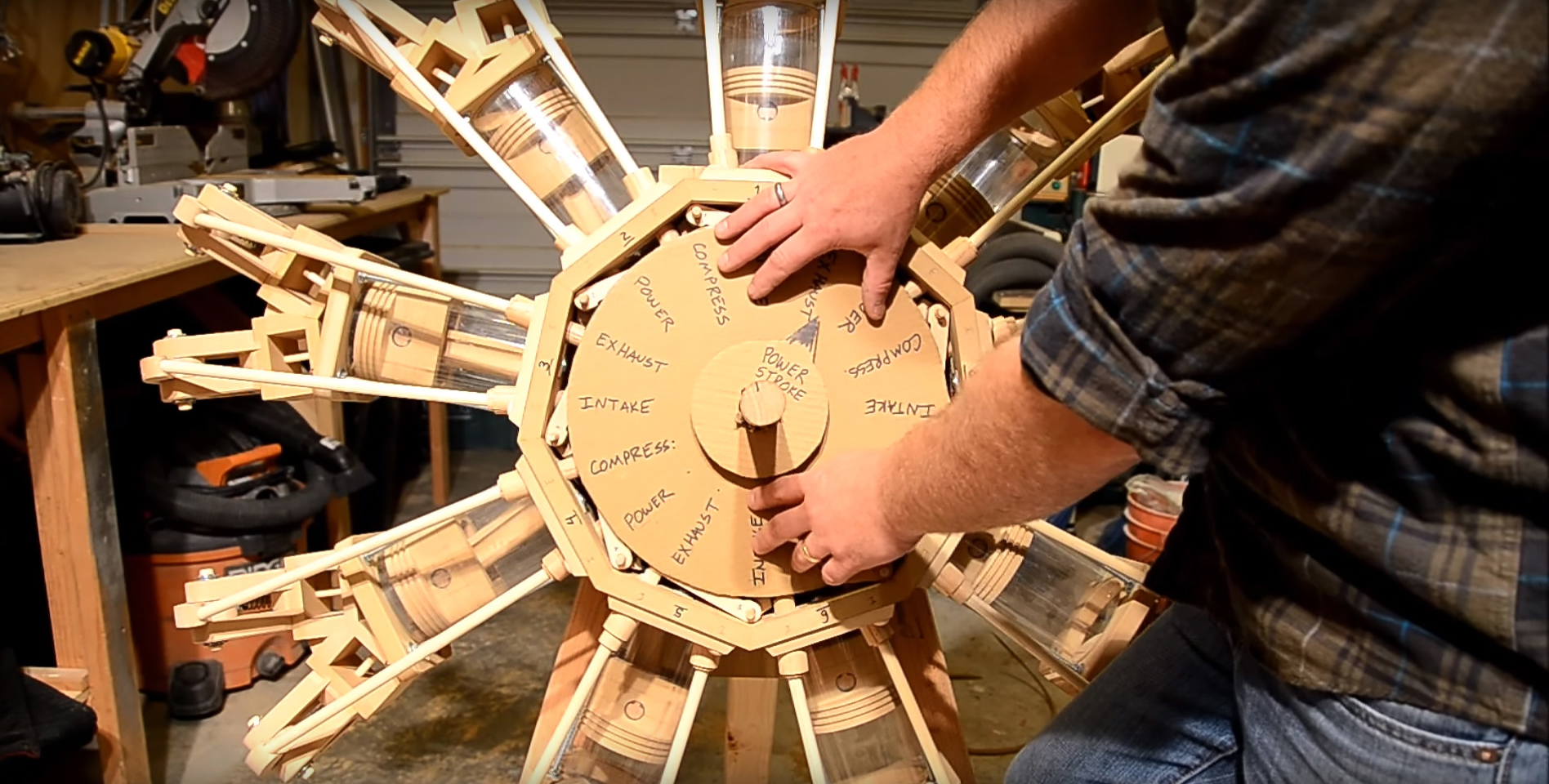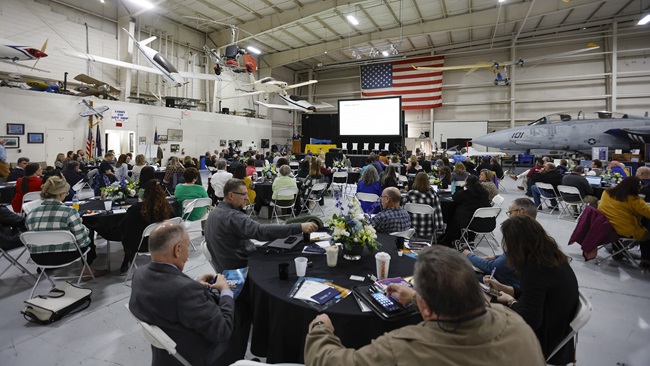Wooden radial engine inspires
A hobbyist took his passion for woodworking and combined it with his love of all things mechanical to create a nine-cylinder radial engine from lumber and plastic.
When he wasn’t building tables or furniture for his house, Ian Jimmerson fashioned and shaped the wooden engine one piece at a time from his Brighton, Colorado, garage. The long Rocky Mountain winters gave the father of five plenty of time to contemplate and complete the two-year project “working off and on through nights and weekends.” The resulting YouTube video demonstrations of have attracted hundreds of thousands of views, favorable comments, and requests for more.
The engine was his most ambitious project to date and it took Jimmerson’s mechanical and woodworking skills to a whole new level. “I built a soccer ball for my daughter,” Jimmerson told AOPA, “and it turned out pretty good.”
Jimmerson is not a pilot and “doesn’t have anything to do with aviation” but he is a mechanic for a natural gas company and engines are his specialty.
When asked why he chose a complicated nine-cylinder radial aircraft engine, Jimmerson said “to be honest with you they fascinate me. Before I did the research I didn’t know how it all worked so I did all the figuring out” ahead of time. He then procured supplies and cut the templates.
 He looked at five- and seven-cylinder radial designs, “but I thought ‘go big or go home.’ I just wanted more of a challenge.” The initial research was complicated and the resulting engine stands about half as tall as Jimmerson.
He looked at five- and seven-cylinder radial designs, “but I thought ‘go big or go home.’ I just wanted more of a challenge.” The initial research was complicated and the resulting engine stands about half as tall as Jimmerson.
Clad in a flannel shirt for the video with his wood-working shop tools in the background, the mechanic said that he’d seen animations of radial aircraft engines but “nothing explains how they work or why they work, or what’s going on” inside the motor.
He figured he’d take his wooden creation apart slowly for the video and explain the inner-workings of the radial engine—component by component—to demonstrate how it functioned as a unit.
As he spun the engine’s wooden crankshaft, components in the nine cylinders revealed intricate timing making teams of pistons move up and down while sets of intake and exhaust valves opened and closed in a mechanical ballet.
In the video, Jimmerson pointed out the top-most cylinder was No. 1 and the remaining cylinders were numbered counter-clockwise from the front, “first firing all the odds, then all the even cylinders.”
Large wooden pistons and connecting rods are visible inside clear acrylic tubes to show viewers how an intake stroke followed by a compression stroke takes one revolution of the crankshaft. He demonstrates how a power stroke and then an exhaust stroke on “a second revolution” complete the power cycle.
Articulating rods, wrist pin connectors, cam ring lobes, and crankshaft movements are all explained in easy-to-see giant wooden parts as the contraption swiftly moves in unison, fueled by Jimmerson’s portable drill rather than avgas.
Jimmerson said that a single-row radial engine always has an odd number of cylinders because of its firing order. However, some radial engines are constructed of multiple rows of cylinders which might add up to 14, 18, or even 28 cylinders, such as the World War II-era Pratt & Whitney R-4360 Wasp Major.
So far, the wooden radial engine videos have drawn more than 425,000 views with compliments from pilots, mechanics, and educators. One viewer wrote that the wooden model was “amazing! You’re a wonderful teacher,” and another said “of all teachings and demonstrations by so called craftsmen, this is the best of them all.”
Although the educational project hasn’t yet been on the road, Jimmerson said his wooden engine is ready for show-and-tell if he can take the time away from his day job to visit with school groups or other interested parties.




